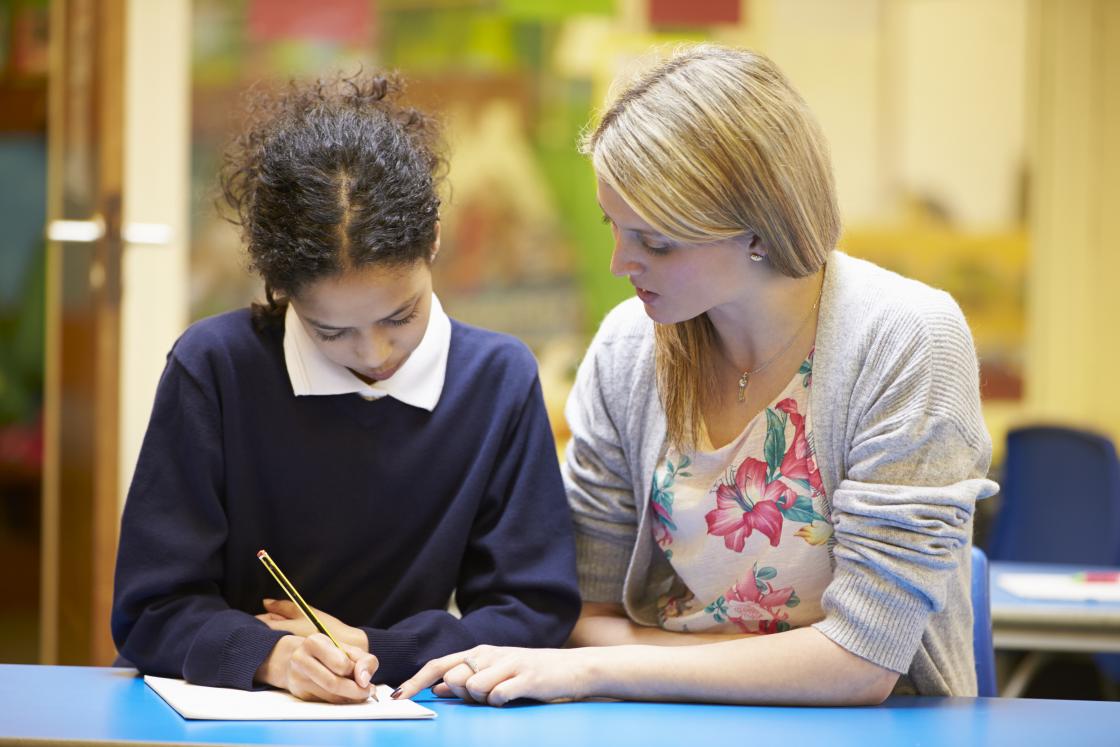Insight
SENDing support in stressful times

Date Published
23/02/2021
Reading time
5 minutes
The Coronavirus pandemic has fundamentally changed children’s and young people’s lives. The time they’ve been forced to spend out of school has affected their cognitive and academic development. It’s affected their current levels of learning and their future ability to learn.
While pupils are unlikely to ever catch up on the work that they’ve missed, it’s vital that we ensure that they’re ready to learn and thrive again once the pandemic is over. They need to feel safe and secure before they can engage in the full curriculum again; they need to have their social and emotional needs met to be able to enjoy the positive experiences of education that are vital to securing good outcomes for them.
This is particularly important for children with special educational needs (SEND) or a learning disability, disabled young people, children with disadvantaged family backgrounds and children from black, Asian and minority ethnic backgrounds: research has shown that they’ve tended to be more anxious during the pandemic than children and young people without these characteristics.
Because schools offer both education and pastoral support, returning has the potential to help to restore children’s wellbeing, addressing their worries about future pandemics and being isolated.
Attachment or transitional objects
One way we can support pupils with SEND is to consider the use of attachment or transitional objects.
Everyone experiences discomfort or anxiety at times in their life. We all manage it in different ways.
Anxiety is “most generally a vague, unpleasant emotional state with qualities of apprehension, dread, distress and uneasiness”. When you’re finding ways to manage children’s anxieties, planning for transitions is very important. Being consistent and predictable and having a routine allows most children to cope with change and builds their resilience. Transitional objects or attachment objects can help children to cope better in class, especially those who need extra support.
Attachment in psychological terms is “binding affection, an emotional tie between two people” while a transitional object has “considerable emotional attachment”, bridging the gap between an attachment figure, such as a parent, and independence. They’re a source of comfort to children in situations that may make them anxious, especially for those with attachment difficulties who often have high levels of anxiety.
Inanimate objects often hold great importance for us – a photo, jewellery, a toy from childhood and so on can be sources of comfort and joy - and we can get upset if they’re lost or destroyed. It’s just the same for children: a transitional object can lower their stress levels and help them to feel calm and secure. They can transfer the affectionate bonds that they have with people to these objects, and think about them when they’re looking at or touching the object.
In 1979, psychologist Richard Passman studied children under three years old and found that 60% of them had an attachment object. In another study, he found that children with an attachment object had lower blood pressure and heart rate and displayed less behaviours when they were in mildly stressful situations, such as a visit to the GP.
The benefits of having attachment or transitional objects at school
Transitional objects work best at school if they’re unobtrusive, quiet and attached to a child’s clothing so they don’t get lost.
They’re particularly effective as a way of helping children with autism to stay focused during class.
Teachers talk about the importance of pupils having ‘good listening' skills such as making eye contact and keeping their hands and feet still. But no one can sit still for long periods of time and it’s unreasonable to expect children to sit completely still. Some children ‘stim’, which is the exaggerated, repetitive “self - stimulatory behaviour” that people with autism use to manage anxiety, fear and stress.
We all ‘stim’ to some extent, generally by fiddling with our hair, doodling or biting our nails. This is a more acceptable behaviour than hand flapping, banging the table or tapping. Giving pupils who need to ‘stim’ an attachment or transitional object can help them to refocus their attention and allows them to ‘stim’ in a more acceptable way.
It’s vital that teachers understand the function of attachment or transitional objects and allow children to keep them at all times as a tool to help them to focus.
Find out more
Entrust can help schools re-inspire the COVID-19 generation.
- Re-engage, inspire and motivate your pupils and get their education back on track
- Build confidence and offer a sense of belonging and opportunity
- Bespoke support for schools – so they can meet the needs of every child, and they can reach for their potential
- Helping schools to overcome barriers to learning.
We will help your SEND pupils to bounce back, re-establish relationships and gain the resilience that they need to improve their wellbeing. View our SENIS services
Make an Enquiry
Contact us to enquire about our servicesOr, call us on 0333 300 1900

